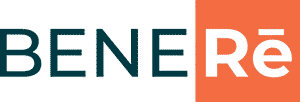Employer-funded supplemental (voluntary) benefits through a captive model can help to protect employees from unexpected medical expenses and provide employers with financial transparency.
Key Takeaways
- BeneRe Co-Founder and CEO Lamont Thurston was featured on a FinFit podcast episode to discuss the benefits of a captive model for supplemental benefits
- In response to rising healthcare costs and increasing deductibles, employers are seeking to provide their employees with affordable accident, critical illness, and hospital indemnity coverage
- The captive insurance model is changing the way employers think about supplemental (voluntary) benefits and allows employees greater coverage for less
- The big idea is to protect employees from catastrophic financial burdens that can result from unexpected medical bills, while offering transparency and potential year-end dividends to employers
In the ever-evolving landscape of healthcare benefits, ensuring employees have a safety net against unexpected medical expenses that can result in financial burdens is paramount. One innovative solution gaining traction is employer-funded supplemental health insurance supported by a captive model. Recently, on a FinFit podcast episode, BeneRe Co-Founder and CEO Lamont Thurston shared insights into this crucial topic.
The first steps toward an innovative supplemental benefits solution.
Spending his early career in the finance industry and working with corporate clients, Lamont witnessed firsthand the challenges of rising healthcare costs and employers’ seemingly limited options for helping employees with this obstacle. Later, Lamont would transition to an insurance focus and a concept at the intersection of finance and insurance intrigued him. Could a captive model leverage financial strategies to mitigate risks and optimize insurance coverage? Best practices in the captive world had been established for decades but had never been applied to supplemental insurance. But a change was coming.
A captive model makes an employee financial safety net possible.
A recent study indicates that the average premium for family coverage has increased by 22% over the last five years, creating a mismatch between the risk exposure for consumers and their savings. Motivated by challenges such as this, Lamont was inspired by the efficiencies witnessed in the captive industry and recognized the untapped potential of applying similar principles to supplemental insurance. “Employers want to protect their employees from the wild roller coaster ride that catastrophic insurance claims can cause,” says Lamont. “Captive models are good at exposing inefficiencies and creating greater value.
Central to this captive approach is the concept of pooling resources to maximize opportunities for employees. Lamont describes it as “putting employers and employees into one giant mixing bowl,” where diversification of risk and diminished expenses ensures optimal coverage and cost-effectiveness. This unified approach eliminates the excessive costs and opaque financial results that make most employers uncomfortable.
The positive impact of employer-funded supplemental insurance.
Lamont emphasizes the critical role of employer-funded supplemental insurance in safeguarding employees against catastrophic medical expenses. “Employers are increasingly recognizing the importance of shielding their workforce from the financial turmoil caused by unexpected medical bills,” he explains. By offering supplemental coverage, employers not only prioritize employee well-being but also enhance fiduciary responsibility and transparency.
“The supplemental insurance market is experiencing unprecedented growth,” Lamont remarks, highlighting the burgeoning demand for comprehensive coverage beyond traditional health plans. With healthcare costs soaring and deductibles reaching unsustainable heights, employees face significant financial risk without the means to cover situations with catastrophic cost – like a hospitalization or major disease diagnosis.
The benefits of the BeneRe equation.
BeneRe offers supplemental benefits to large employers via a group captive insurance program in which all employee premiums are paid directly to the A-rated carrier in exchange for fully insured policies. This helps employers provide supplemental benefits to their employees, including Accident, Critical Illness, and Hospital Indemnity coverage. Thus far, the innovative offerings have been well received. “Forming BeneRe was an opportunity for disruption and in the first handful of years we have over 100 employers and about a million employees in the program,” says Lamont.
BeneRe’s innovative model also ensures that unused funds are reinvested back into the employee pool, further enhancing the benefits package. “If claims remain unutilized, they revert to the benefits program as plan assets, which are then reinvested for the employees’ benefit,” Lamont says. This unique feature underscores BeneRe’s commitment to helping companies prioritize employee financial security and well-being.
 Listen to the FinFit podcast episode featuring Lamont now or reach out to BeneRe for a complimentary financial analysis of in-force programs today.
Listen to the FinFit podcast episode featuring Lamont now or reach out to BeneRe for a complimentary financial analysis of in-force programs today.
